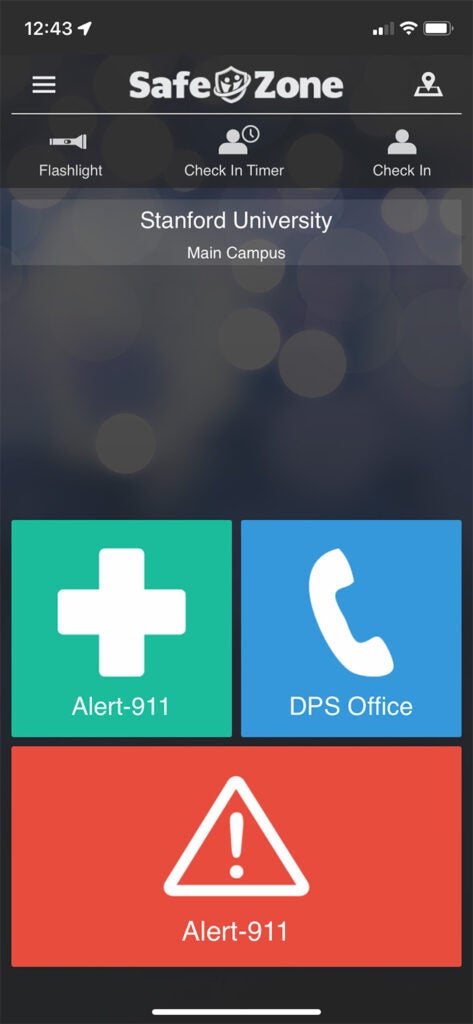SafeZone app brings 911 dialing and location accuracy to Stanford
The free, DPS-managed app connects with emergency responders and can share your location with greater accuracy than most emergency phone features.
There’s a new tool available for the Stanford community, aimed at giving you improved access to help in an emergency.
SafeZone, managed by the Stanford University Department of Public Safety (SUDPS), is a free location-based app that connects you to emergency dispatchers and responders and can share your location when you call for help. The app is available for anyone with a SUNet ID and aims to provide an additional option to enhance personal safety on the Stanford campus.
“SafeZone brings the functionality of a blue emergency tower to your mobile device, regardless of where you are on campus, and even if you can’t describe your location to responders,” said SUDPS Chief Laura Wilson. “Activating an alert in the app simultaneously raises an alert that shares the GPS location to DPS staff at the operations desk and our officers in the field.” The application can continue to share your location until you are found or the alert is canceled, which is helpful in the event that an individual needs to move to safety or is otherwise not stationary during the alert.
Use of the app is completely voluntary. A key benefit of the app is that it provides improved GPS accuracy over most SOS/Emergency phone features, but the user controls the GPS functionality. The app does not share a device’s GPS location until it is activated by the user, and location sharing ends once the alert is canceled.
If a user activates the app alert when they are away from the Stanford campus, the alert will be sent to the local 911 answering point and no GPS location will be shared. This is the same for those on the Redwood City campus. In Santa Clara and San Mateo Counties, SMS text to 911 is also an available means for accessing dispatchers at an answering point, when it is not possible, or safe, to place a call.
The app functions on both cellular and Wi-Fi for registered devices, however, there are a few locations on campus where finding a blue tower might still be a better option for now.
“University IT is constantly working to improve coverage in areas lacking connectivity on campus, such as lower levels of underground parking,” said Matthew Ricks, senior director of IT Facilities Infrastructure & Resilience. “If you find yourself in an area of campus without service, finding a blue tower or landline phone is best.” You can also improve your chances of maintaining service in more areas around campus by making sure to turn on Wi-Fi calling on your cell phone.
While this initial release will be limited to police/fire/medical response via 911, or the SUDPS operations desk for non-emergency assistance, the app has the ability to provide expanded functionality. SUDPS has been previewing the app with its own members and with student leadership, and have received positive feedback. Administrators are hopeful that the rollout of the app is a first step toward offering more types of accessible support for the campus community.
The app joins a host of campus-wide efforts underway to ensure the physical security and safety of the campus community. In early November, the 5-SURE Safe Rides service launched expanded hours for students, faculty, and staff. In addition to the ongoing installation of cameras throughout campus, a task force has been created to identify opportunities to improve exterior lighting and create a process for the campus community to submit lighting requests and comments. “We are committed to taking a comprehensive approach to safety for our campus community,” said Patrick Dunkley, vice provost for institutional equity, access, and community. “We’re glad that many of these efforts are also in alignment with the measures requested by the ASSU.”
The SafeZone app can be downloaded through Apple or Google Play and requires a SUNet ID to register. More information can be found at police.stanford.edu/StanfordSafeZone.
